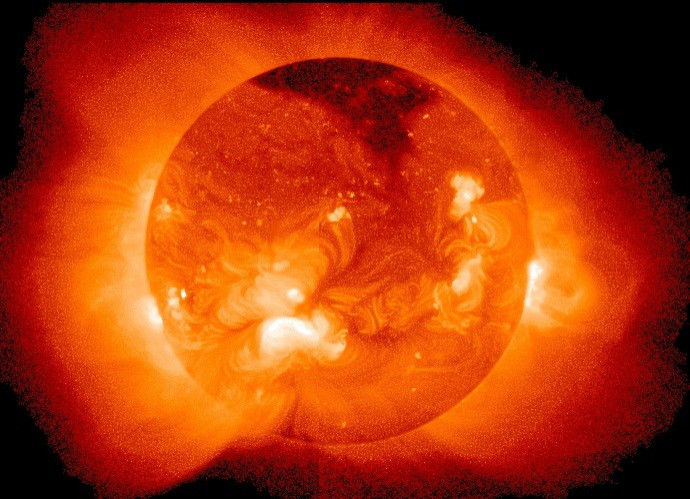Astronomers Reach Verdict On Distance From Earth To Sun, Finally

You can stop worrying about calculating your distance from the sun - astronomers have taken care of it.
In August, the International Astronomical Union -- which you may remember as the body that demoted poor Pluto to dwarf planet status in 2006 -- voted to fix the astronomical unit, which designates the distance between the sun and Earth, at 149,597,870,700 meters (92,955,807.273 miles). The new fixed distance replaces a complicated equation that served as the previous definition of an astronomical unit..
One might think that astronomers would have had the whole 'distance from the Earth to the sun' matter locked up a while back, but it turns out that the astronomical unit has been a contentious figure for centuries.
17th-century astronomers Giovanni Cassini and Jean Richer pegged the distance from the Earth to the sun as 140 million kilometers, just nine million kilometers off from the now-official figure. They calculated the astronomical unit by using observations of Mars from two different spots on Earth, then used the difference between those two observations to calculate our distance from Mars, which they then used to determine our distance from the sun.
But as technology advanced, scientists found even more precise ways to set the astronomical unit.
The previous formal definition of an astronomical unit, adopted by the IAU in 1976, was slightly less accessible to the layperson: "the radius of an unperturbed circular orbit a massless body would revolve about the sun in 2*(pi)/k days (i.e., 365.2568983... days), where k is defined as the Gaussian constant exactly equal to 0.01720209895."
One problem with the old definition was that it ran into complications thanks to general relativity. Observations on space-time are affected by where you measure them from, so the result you get from the previous definition of an astronomical unit differs by about 1,000 meters if you calculate it from the surface of Jupiter instead of Earth, German astronomer Sergei Klioner said in an interview with the journal Nature.
Having a fixed number for the distance between the Earth and the Sun may mess with some computer programs that use the old definition, but it won't muck up any of NASA's spacecraft, since they measure distance in space directly. The new standard, however, is easing a lot of headaches for astronomers.
"I'm happy that I don't have to explain it to my students any longer," Klioner told Nature.
© Copyright IBTimes 2024. All rights reserved.





















